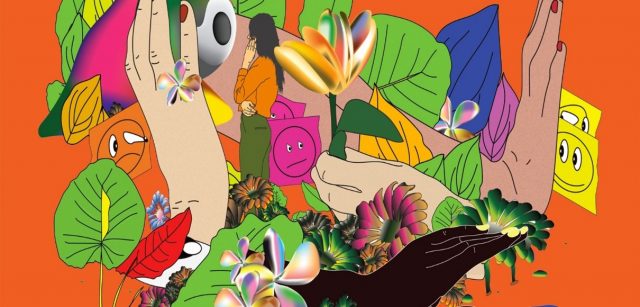Psychedelic Micro-dosing Benefits – A Comprehensive Review

Over the last decade, micro-dosing has increased in popularity, but the scientific literature contains minimal research on this practice. There has been limited reporting on adverse events associated with micro-dosing, and the experiences of micro-dosers.
Today, our goal is to provide readers with a succinct and accurate understanding of the current literature pertaining to the research (both clinical and anecdotal) surrounding this relatively new method of psychedelic consumption!
An Overview about Micro-dosing
Psychedelics have returned from the shadows and re-entered the mainstream in a huge way over the last two decades, whether through successful ballot initiatives, on the stock market or in Silicon Valley. But now, it’s not profoundly visual, earth-shattering trips like the ones that inspired Steve Jobs to create the iPhone that are being glorified, it’s micro-dosing.
- Micro-dosing is defined as “the practice of consuming very low, sub-hallucinogenic doses (one-20th to a tenth of a recreational dose) of a psychedelic substance, such as lysergic acid diethylamide (LSD) or psilocybin-containing mushroom, with the goal of not getting high, but to feel more focused, creative and present.”
Recent reports indicate that millennials are drinking less and less interested in drugs like cocaine, rather, they’ve taken up LSD and mushrooms in the way someone else might pop an Adderall. The most widespread self-reported benefits include improved mood, better eating and sleeping habits, and less of a need for caffeine, but we’ll touch upon this more later throughout this article.
The Big Four in Micro-Dosing
Lysergic Acid Diethylamide (LSD)
Users describe feeling a boost in energy, focus, and an increased sense of subjective vitality. A proper micro-dose, according to users of the drug, is like a day in which you’ve “gotten enough sleep and eaten well.” Users have also reported that provides assistance in addressing addictions, from cigarettes to heroin. Additionally, many LSD micro-dosers find that it’s made it easier to lose weight, stop drinking, and even cut down on playing video games.
Psilocybin (Magic Mushrooms)
Approximately one to two hours after consumption, users have reported an increase in concentration and vitality. Many users have also found that micro-dosing psilocybin helps with weaning off and staying off anti-depressants (SSRI’s). It can help reduce the side effects of a withdrawal and even mitigate symptoms of depression, along with increasing one’s sense of empathy as well.

N-Dimethyltryptamine (DMT)
DMT has a quicker onset than any of the drugs listed above it can kick in seconds after use, and its acute effects last only about a half-hour. It brings users to a place of introspection and, as one frequent micro-doser put it, cuts out anything that isn’t serving me in the present moment, so I can just enjoy being. in other words, it helps users block out the noise in order to feel present.
Cannabis
Micro-dosing cannabis has been proven to be helpful in addressing an assortment of physical ailments, such chronic pain, nausea, inflammation, indigestion, fibromyalgia, PTSD-associated and insomnia. Likewise, it can boost interest in one’s surroundings, creativity, happiness, and focus, while also combating stress.
Preliminary Findings Suggest Positive Outcomes
A recent study conducted by Anderson et al. (2019) has shown that micro-dosing psychedelics resulted in the following:
- “Improved mood (26.6%, 215 reports): This most frequently reported benefit-category captures all codes related to mood improvements: happiness, well-being, peace, calm, and reductions in depressive symptoms. Also included are reports of improved outlook, appreciation of life, optimism, spiritual and emotional insights, and being more in touch with emotions.”
- “Improved focus (14.8%, 119.5 reports): This benefit-category references codes concerning focus and concentration, conscious awareness, mindfulness, and increased engagement and attentiveness.”
- “Creativity (12.9%, 104 reports): This category includes creativity per se, as well as meta-creative processes, e.g. shifting perspectives, divergent thinking, curiosity, and openness.”
- “Self-efficacy (11.3%, 91.5 reports): This category references improvements in self-efficacy (motivation/ambition, productivity, confidence, sense of agency) and self-care (introspection, meditation, and other behaviours facilitating mental health).”
- “Improved energy (10.5%, 84.5 reports): This category includes codes referencing “improved energy” per se, as well as alertness, wakefulness, and stimulation.”
- “Social benefits (7.6%, 61 reports): This category references various socially facilitating benefits such as extraversion, empathy, sense of connection, and verbal fluency.”
- “Cognitive benefits (5.8%, 47 reports): This category concerns cognitive enhancement (understanding, problem-solving), clarity of thought (clear headedness, lucidity), and memory.”
- “Reduced anxiety (4.2%, 34 reports): References to anxiety reduction and social-anxiety reduction fit in this category.”
- “Physiological enhancement (3.0%, 24 reports): This category concerns biological processes including enhanced senses (especially visual), cardiovascular endurance, sleep quality, and reduced migraines and/or headaches.”
- “Other perceived benefits (2.2%, 18 reports): This category was a catch-all for otherwise uncategorized codes. These include the novelty of the experience itself, the ability to control the dose, the lack of side-effects, and other miscellany. This category also includes 1 report that there were no beneficial effects.”
- “Reduced symptoms (other) (1.1%, 9 reports): References to stress reduction, reduced sensitivity to trauma, and references to reduced substance dependence (e.g. quitting smoking) are included.”
Additionally, participants answered targeted questions concerning behavioural improvements and substance-use reductions Respondents reported the following:
- improved mood (92.9%)
- anxiety (59.2%)
- meditative practice (49.1%)
- exercise (49.1%)
- eating habits (36.0%)
- and sleep (28.8%)
They also indicated reduced use of:
- caffeine (44.2%)
- alcohol (42.3%)
- cannabis (30.3%)
- tobacco (21.0%)
- psychiatric prescription medications (16.9%)
- illicit substances (16.1%).
Moving Forward!

The potential of micro-dosing has not yet been well understood, but the benefits reported in this literature suggest potential novel research avenues for psychedelic-based pharmacotherapeutic treatment of depression, anxiety, ADHD, smoking cessation, and substance use disorders.
LSD and psilocybin were the most frequently used substances and, as micro-dosing continues to be culturally, scientifically, and clinically relevant, it will be important to establish dose-dependent outcomes of micro-dosing and to consider the different contexts in which micro- and full doses may be variably appropriate, including when they may complement each other.


